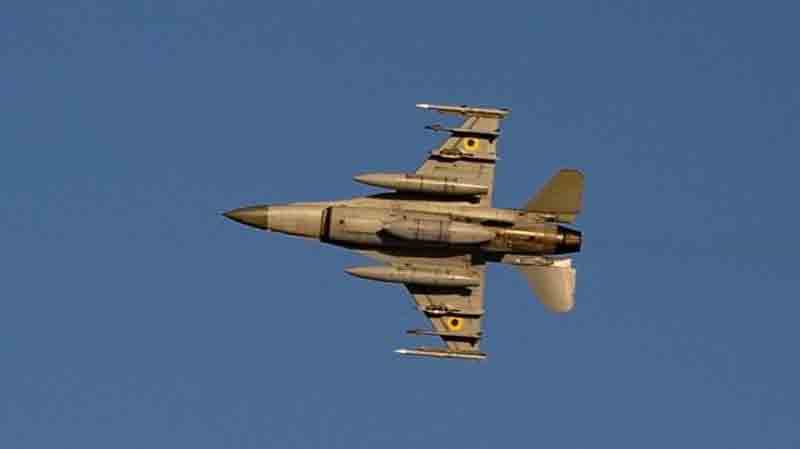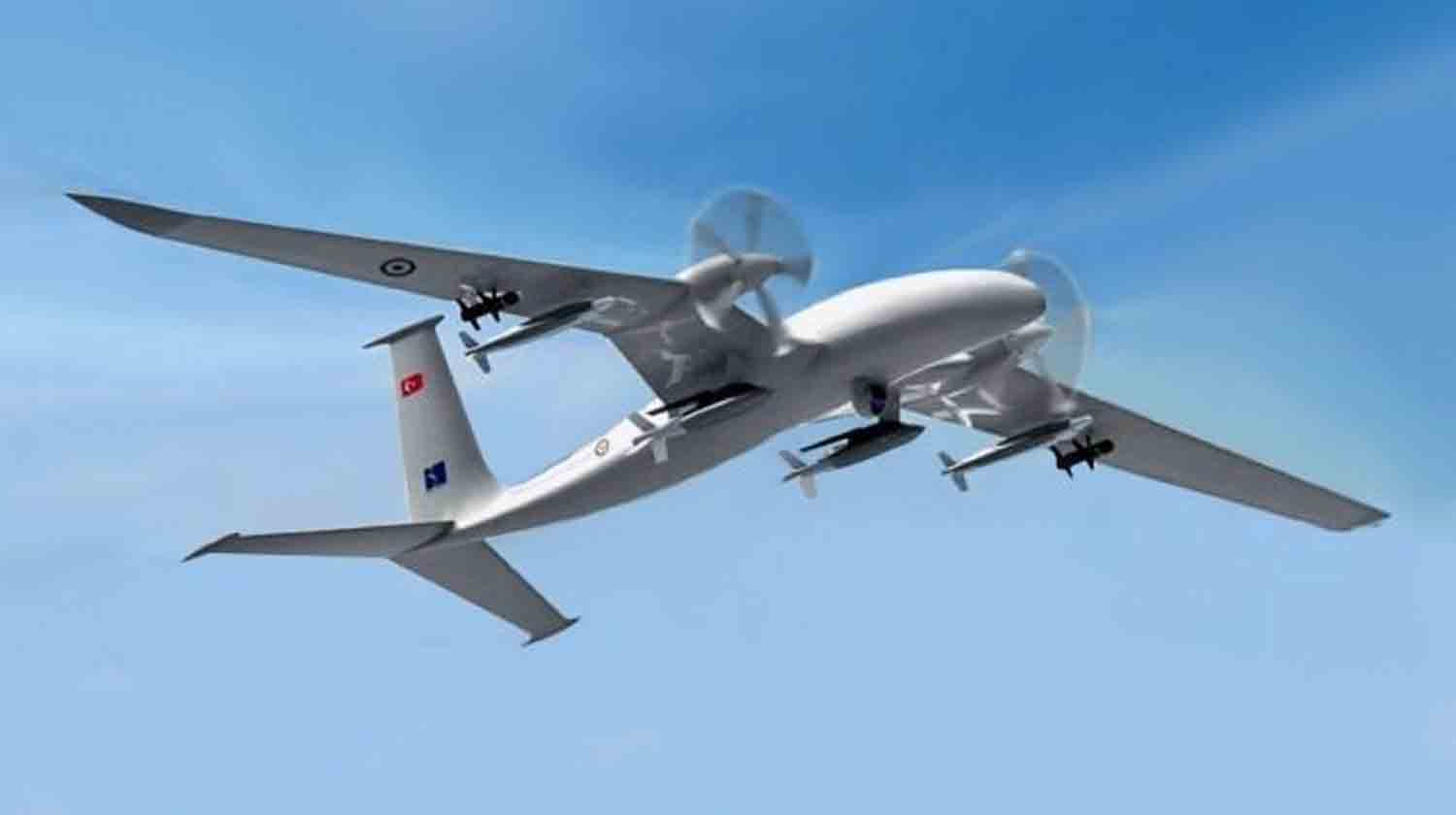Army General Christopher G. Cavoli, the leader of the U.S. European Command (EUCOM), announced that the Ukrainian Air Force has markedly increased its deployment of F-16 fighter jets in operations against Russia.
In a briefing with journalists, Cavoli stated that Ukrainian pilots are now operating these advanced jets on a daily basis, benefiting from their enhanced proficiency with the aircraft and supported by additional supplies from European partners such as the Netherlands and Denmark.
This development represents a crucial turning point in Ukraine’s defense strategy, occurring more than three years into Russia’s extensive invasion, as Kyiv aims to challenge Moscow’s air superiority. The information highlights a transformation in the conflict’s dynamics, prompting inquiries about how these aircraft will alter the battlefield and their implications for the wider war.
The F-16, commonly referred to as the Fighting Falcon, is a single-engine multirole fighter developed by General Dynamics (now Lockheed Martin) in the early 1970s. Originally designed for air superiority, it has transformed over the years into a flexible platform capable of performing a variety of missions, including air-to-air combat and precision ground attacks.
Its compact structure, featuring a cropped delta wing and a maximum speed exceeding Mach 2, provides the F-16 with remarkable maneuverability. The aircraft is typically armed with a 20mm M61 Vulcan cannon and can be outfitted with various munitions, including AIM-9 Sidewinder and AIM-120 AMRAAM missiles for aerial engagements, as well as precision-guided munitions like the JDAM (Joint Direct Attack Munition) for ground operations.
With a combat radius of approximately 340 miles on internal fuel, which can be extended with external tanks, the F-16 represents a significant enhancement for Ukraine compared to its outdated Soviet-era fleet of MiG-29s and Su-27s, which do not possess the same advanced avionics and weaponry integration.
The integration of the F-16 into Ukraine’s military operations is significantly reshaping the tactical environment. General Cavoli highlighted that these jets are deployed “every day” to target Russian missile threats and conduct strikes in eastern Russia, a claim supported by reports from the Ukrainian Air Force dating back to late March.
Earlier this year, a Ukrainian pilot stated that more than 80 percent of missiles fired from F-16s successfully hit their intended targets, effectively neutralizing threats such as Shahed drones and cruise missiles launched from Russian territory. This high level of accuracy is attributed to the aircraft’s sophisticated radar and fire-control systems, particularly the AN/APG-66 or the upgraded AN/APG-68 radar, which facilitate precise targeting over long distances.
The AIM-120 AMRAAM, a radar-guided missile with a range of up to 65 miles, allows Ukrainian pilots to engage Russian aircraft or incoming threats from a safer distance, contrasting sharply with the shorter-range R-73 missiles used on their older aircraft.
In addition to air defense, the F-16’s capability for ground strikes is proving to be revolutionary. Recently, Ukraine has outfitted these jets with GBU-39 Small Diameter Bombs (SDB) and JDAM-ER kits, which transform unguided bombs into GPS-guided munitions with ranges exceeding 40 miles.
This enhancement enables Ukrainian forces to target Russian command centers, supply routes, and fortifications while minimizing the risk to pilots from the extensive surface-to-air missile systems positioned near the front lines. Analysts also suggest that the F-16 may be taking on roles in Suppression of Enemy Air Defenses (SEAD), a mission area where the aircraft excels due to its electronic warfare capabilities.
Outfitted with AN/ALQ-131 jamming pods, the F-16 has the capability to interfere with Russian radar systems, including the S-300 and S-400, thereby creating opportunities for other aircraft or drones to operate effectively. Although there has been no official confirmation of Suppression of Enemy Air Defenses (SEAD) missions in Ukraine as of early April, the F-16’s historical deployment in similar roles during NATO operations in the Balkans and the Middle East provides a framework for understanding its potential effectiveness.
However, maintaining these advanced aircraft in a combat zone poses significant challenges for Ukraine. In contrast to its Soviet-era planes, which were built for harsh environments and could be serviced with readily available local parts, the F-16 requires a sophisticated supply chain and specialized support infrastructure.
General Cavoli alluded to the logistical efforts involved, mentioning that more jets are “prepared to be deployed” and that additional pilots are undergoing training, although he did not disclose specific numbers. European allies, especially Denmark and the Netherlands, have played a crucial role in this initiative.
For example, the Netherlands has committed to supplying 24 F-16s, with deliveries set to commence in 2024, while Denmark has offered an undisclosed number from its surplus fleet. These nations have also provided spare parts, munitions, and technical assistance, likely coordinating repairs at facilities outside Ukraine to mitigate the risk of Russian attacks on airbases.
The specifics regarding the servicing and maintenance of these jets remain unclear. Many of Ukraine’s current airbases, which largely date back to the Soviet era, were not designed to accommodate Western aircraft like the F-16, which necessitate smooth runways and advanced maintenance facilities.
Earlier reports indicate that Kyiv has modified some of its facilities, but it is also possible that makeshift airstrips—such as segments of highways repurposed for MiG-29 operations—are being utilized. This approach is reminiscent of tactics employed in other conflicts, such as Sweden’s use of road bases during the Cold War. Nevertheless, the logistical challenges are substantial.
Each F-16 fighter jet necessitates approximately 16 hours of maintenance for every hour of flight, as per U.S. Air Force guidelines, and depends on a consistent supply of parts such as engines, avionics, and countermeasures. It is likely that European allies have implemented a hub-and-spoke model for repairs, with maintenance operations taking place in NATO member states like Poland or Romania, although this has not been officially confirmed.
In response to Ukraine’s enhancement of its air capabilities, Russia is taking action. The Kremlin has consistently regarded the introduction of F-16s as a critical threshold, with officials warning of potential escalation since the aircraft were first promised in 2023.
Consequently, Russian military forces seem to be modifying their strategies. Open-source intelligence from late March reveals heightened activity of S-400 systems along the front lines, which can engage targets at distances of up to 250 miles using the 40N6 missile. These systems represent a considerable threat to the F-16, compelling Ukrainian pilots to operate at lower altitudes or near the peripheries of contested airspace to evade detection.
Additionally, there are indications that Russia is repositioning its advanced fighter jets, including the Su-35S and MiG-31BM, to address this emerging threat. The Su-35, a 4.5-generation fighter equipped with a thrust-vectoring engine and R-77 missiles, presents a significant challenge, with a radar cross-section and agility that compete with those of the F-16.
Moscow’s approach may also encompass strategies beyond direct confrontations. Russian forces have a track record of targeting Ukrainian airbases with Iskander ballistic missiles and long-range drones, aiming to incapacitate aircraft on the ground before they can take flight. A Ukrainian F-16 was reportedly lost in August 2024, attributed to friendly fire rather than Russian action, highlighting the vulnerability of these assets.
To address this challenge, Ukraine is likely distributing its limited fleet of F-16s—currently estimated at 16 to 18 jets—across various locations, a strategy that has proven effective with its Soviet-era aircraft. However, Russia’s significant numerical superiority in both aircraft and munitions means that each F-16 mission carries considerable risk.
The significance of the F-16 in Ukraine extends beyond the battlefield, impacting NATO’s strategic considerations and the overall direction of the conflict. General Cavoli’s remarks regarding the influx of additional jets and pilots indicate a continued commitment from European allies, despite fluctuations in U.S. support during the Trump administration.
In March, Forbes reported that the U.S. halted assistance for the jets’ electronic warfare systems, a decision that may hinder their effectiveness against Russian radar systems. France has provided support with the delivery of Mirage 2000 jets in February, yet the F-16 remains a crucial component of Ukraine’s Western-supported air force. Its operational success could influence future aid strategies.
A series of victories could lead NATO to expedite the provision of advanced fifth-generation fighters like the F-35, known for its stealth capabilities and superior sensor integration, although its cost of over $80 million per unit makes this a long-term consideration. On the other hand, significant losses could strengthen the argument that older platforms like the F-16 are not well-suited for contemporary, high-intensity warfare.
In contrast, Russia’s air force boasts a diverse array of aircraft that far exceed Ukraine’s fleet in size, though they differ in capabilities. The Su-35, equipped with the advanced Irbis-E radar and 12 weapon hardpoints, directly competes with the F-16, although it does not offer the same level of compatibility with NATO-standard munitions.
The MiG-31, originally designed as an interceptor, is equipped with long-range R-33 missiles and can achieve speeds of Mach 2.83. However, its initial flight in 1975 has rendered it less versatile. The recent acquisition of F-16 Block 70 jets by Western allies like Bulgaria, as reported by Newsweek, underscores the ongoing relevance of this platform.
Bulgaria’s upgraded models, featuring AESA radar and Link 16 data-sharing capabilities, demonstrate the evolution of the F-16 since its introduction, setting a standard for what Ukraine could accomplish with additional enhancements.
The F-16 has a proven combat history, having demonstrated its effectiveness in various conflicts. In Operation Desert Storm in 1991, U.S. F-16s conducted over 13,000 sorties, successfully targeting Iraqi air defenses and infrastructure with minimal casualties. During the 1999 Kosovo War, they led SEAD operations against Serbian surface-to-air missile sites, highlighting their versatility.
Ukraine’s situation is distinct, as it confronts a well-resourced adversary, but the F-16’s history indicates it can perform effectively when operated by skilled pilots and supported adequately. Ukrainian pilots, trained in the U.S. and Europe since 2023, combine Soviet-style adaptability with Western precision, creating a hybrid strategy that could enhance the F-16’s effectiveness.
The overall impact on the conflict will depend on how well Ukraine utilizes this asset. The arrival of the jets has already lifted spirits, with President Volodymyr Zelensky describing their deployment as a “new chapter” in Ukraine’s defense following the first delivery last summer.
Strategically, these aircraft serve as a counterbalance to Russia’s dominance in the air, which has facilitated continuous attacks on Ukrainian urban areas. However, their availability is still limited, falling significantly short of the 200 to 220 fighters that experts believe Ukraine requires to effectively contend with Moscow’s air capabilities. While upcoming deliveries from Belgium and ongoing training initiatives will provide some support, the escalating situation on both fronts indicates a prolonged conflict.
Ultimately, the F-16’s significance for Ukraine may extend beyond its combat capabilities; it symbolizes a pathway to NATO integration and reflects the steadfast commitment of Western nations.
Russia’s capacity to adapt—evident in its adjustments to radar operations and increased strikes on airfields—means that the F-16 is not a guaranteed solution. As the war continues, a critical question remains: will these jets alter the dynamics of the conflict, or simply postpone an unavoidable confrontation? The resolution may hinge less on the jets themselves and more on the political determination that supports their deployment.
Discover more from Defence Talks | Defense News Hub, Military Updates, Security Insights
Subscribe to get the latest posts sent to your email.





